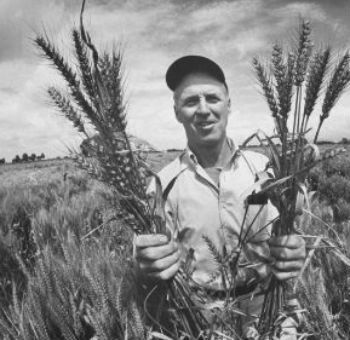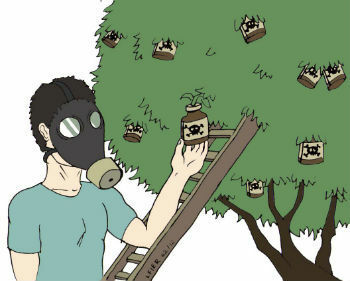green revolution represents a set of technological innovations that aim to improve agricultural practices.
The first country to apply the concept was Mexico and its use spread to several countries, which significantly increased their food production.
What was it?
The Green Revolution has its origins after World War II (1939-1945) when hunger was a real problem in countries in sub-Saharan Africa and southern Asia.
The Revolution consisted of using the best technology to produce more food in the same space of land. In this way, seeds of genetically modified plants were developed that produced more, had a better response to fertilizers and greater resistance to pests.
Furthermore, modern methods of factory management were applied to the field. For this, he began to research the best way to equalize the limitations of the terrain, such as lack of irrigation, greater performance of agricultural implements such as planters and harvesters
All these actions were already used by farmers throughout human history. However, now they are attitudes typical of an industrial and capitalist society.
Summary
The mentor of the Green Revolution was the North American agronomist Norman Borlaug (1914-2009). In the 1930s, Borlaug began researching pest and disease resistant wheat varieties.
Borlaug's studies attracted the attention of the Mexican government, which called him to coordinate, in 1944, Mexico's Cooperative Wheat Production Program.
The works were developed in partnership with the American Rockefeller Foundation.

The program applied in Mexico resulted in plants with greater performance in the field. In this way, they made the country, before an importer, self-sufficient in wheat production.
In the period from 1950 to 1960, other countries started to adopt the concept of greater productivity in the field, applying transgenic seeds. The governments of Brazil, India, Pakistan and the Philippines are among those that have adopted the Borlaug method.
In 1968, the president of the United States Agency for International Development, William Gaud, called the field's new techniques a "green revolution."
Indeed, Borlaug was awarded the Nobel Peace Prize in 1970 for his contributions to reducing world hunger.
Developed countries also applied the agricultural system created by Borlaug and reduced their dependence on food imports. We can mention the United States, which began to export wheat from 1960 onwards.
The concept was applied to other products and the search for greater productivity began to guide agriculture.
The development of techniques to irrigate the soil improved agricultural performance, previously held hostage by the rainfall regime. Irrigation has also contributed to improving the use of fertilizers, fungicides and pesticides.
The improvement in the productivity ratio directly benefited poor countries, such as India, which started exporting rice.
To give you an idea, in 1964, India produced 9.8 million tons of wheat. In 1969, production reached 18 million tons.
Pakistan saw its grain production grow from four to seven million tons in the same period.
Brazil
The profile of Brazilian agriculture has completely changed after the adoption of practices characteristic of the green revolution.
The introduction of new concepts took place during the military regime and was one of the pillars of the so-called "economic miracle".
From large-scale production, the country became a food exporter. Among the products with great performance are soy and corn.
With the agricultural matrix focused on foreign sales, Brazil created development and research agencies. Among the agencies opened in this period is Embrapa (Brazilian Agricultural Research Corporation), founded in 1973.
Positive and negative points

Efficiency in the field, advances in production, research and cheaper food are identified as the main advantages of the concept of the green revolution.
As disadvantages we can mention:
- Soil depletion;
- Erosion;
- Changing the ecosystem for the implantation of the crop;
- Logging;
- Dependence on large industries that produce transgenic seeds, fertilizers and pesticide;
- Prioritization of the land ownership structure, harming family production and encouraging rural exodus.
read more:
- Agriculture
- Agricultural Systems
- agricultural revolution
- Transgenic foods
- Organic agriculture
- Biotechnology



